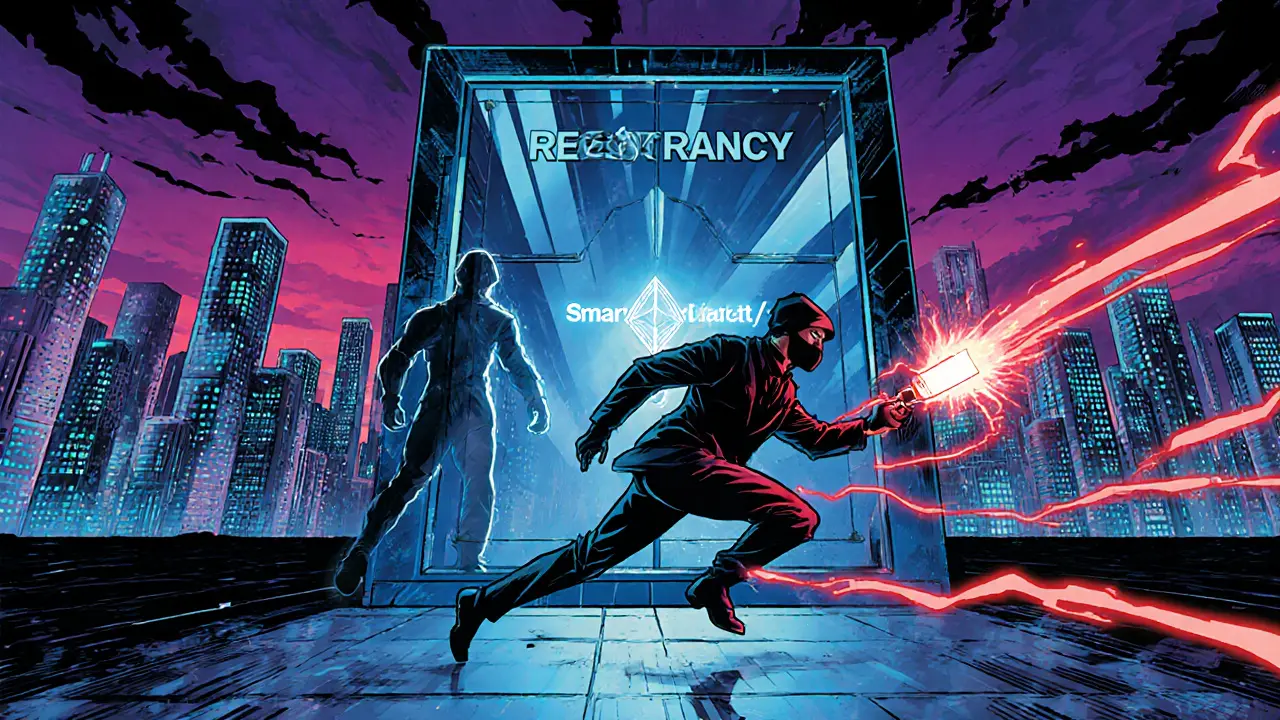Reentrancy Guard: Protecting Smart Contracts from Recursive Attacks
When working with reentrancy guard, a security pattern that stops a contract from being called again before the first call finishes. Also known as reentrancy protection, it keeps Ethereum and other blockchain contracts safe from harmful recursive calls.
Why Every Solidity Developer Needs a Guard
Modern smart contracts, self‑executing code that runs on blockchains like Ethereum are the backbone of DeFi, NFTs, and tokenized assets. Without a reentrancy guard, a contract can be forced into a loop that drains funds, as the DAO hack showed back in 2016. The pattern works by setting a state flag—often called a mutex—right before an external call. If the contract receives another call while the flag is set, the call is rejected, breaking the attack chain. This simple check turns a vulnerable contract into a robust piece of code that can still interact with other contracts safely.
In practice, the guard adds only a few lines of Solidity but provides a huge security boost. Developers typically declare a Boolean variable like locked, set it to true before calling an external contract, and reset it to false after the call succeeds. If the external contract tries to re‑enter, the guard sees locked == true and aborts. This approach is compatible with most Solidity versions and works alongside other patterns such as checks‑effects‑interactions and pull‑payment designs.
Beyond the basics, the guard also plays a role in newer attack vectors. flash loans, instant, uncollateralized loans used in DeFi arbitrage can be combined with reentrancy attacks to exploit contracts that lack proper protection. A malicious actor can borrow a large sum, trigger a vulnerable function, withdraw funds repeatedly, and repay the loan—all within a single transaction. By inserting a reentrancy guard, the contract refuses the second call, neutralizing the flash‑loan exploit before it can happen.
Because reentrancy threats cut across many blockchain platforms, the concept isn’t limited to Ethereum. Other EVM‑compatible chains, such as Binance Smart Chain and Polygon, inherit the same risk profile, making the guard a universal best practice. Even permissioned blockchains that run Solidity‑based contracts benefit from the extra safety net.
Developers often wonder whether the guard adds gas overhead. The answer is yes, but the cost is tiny compared to the potential loss from an attack. A single Boolean write costs a fraction of typical transaction fees, and the guard’s logic is executed only once per vulnerable function. In a high‑value DeFi protocol, that trade‑off is more than justified.
When designing a new contract, start by mapping out all external calls—token transfers, oracle queries, or other contract interactions. For each, ask whether a malicious re‑entry could cause an unwanted state change. If the answer is yes, wrap the function with a reentrancy guard. Combine it with other defensive patterns, run thorough unit tests, and use automated scanning tools that flag missing guards. This layered approach dramatically reduces the attack surface.
In short, the reentrancy guard is a low‑cost, high‑impact tool that turns a risky smart contract into a resilient building block for the decentralized economy. Below you’ll find a curated list of articles that dive deeper into real‑world attacks, code examples, and advanced security strategies—all centered around making your contracts safer.

